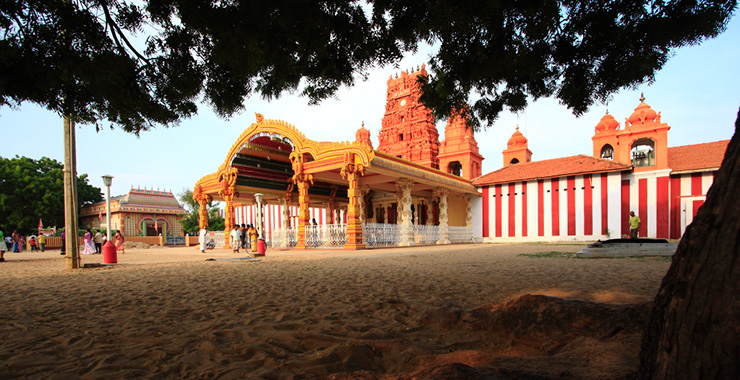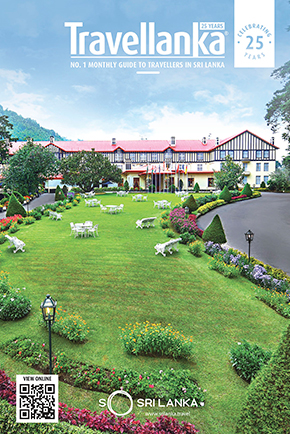
Ancient Cities
The Rama-Sita Story – it is said that Rama visited the island when his beloved Sita was abducted and brought over from India by the mighty Ravana. The legendary locations are spotted around the country including the rock at the beautiful Unawatuna bay.
The arrival of Prince Vijaya of India – having set foot on the island near Mannar (circa 453 B.C.), he brought along with him many an artisan, scholars, warriors and princes. Taking the hand of the local Queen Kuveni, he colonized the island settling alongside local clans – Yaksha and Naga, only later to betray the queen and seek a consort from India.
Arrival of Buddhism – it was atop Mihintale that Arahat Thera Mahinda, the ordained son of Emperor Ashoka preached Buddhism, 236 years after the landing of Vijaya. The islanders, now cultured descendents of Vijaya following the gradual rise of civilization based on agriculture which paves the way for a solid base for the Anuradhapura Kingdom (chronicled in 3rd to 1st century B.C. stone inscriptions), grasped and accepted Buddhism, religion and philosophy that is now a living religion in the island, with ancient monuments in Anuradhapura still being revered and venerated.
Anuradhapura (377 B.C. – 491 A.D.)
Sri Lanka’s first capital was founded in 5c. B.C. by its first King Pandukabhaya. A
great hydraulic civilization with mathematically accurate irrigation feats – massive
tanks, large reservoirs, ornamental ponds, irrigation canals and waterways: attractions that
speak of the ancient engineering capabilities of Sri Lanka which predated most European
irrigation accomplishments. It is also an ancient city filled with architectural marvels in
the form of colossal dagobas (Buddhist shrines), palaces, rock palaces, hospitals, 9 storied
buildings and tunnel systems arose in this era that rivaled creations of the European
region. Anuradhapura is recognized
as a UNESCO World Heritage Site.
Visit Abhayagiri Stupa (1c. B.C.),
the Ruwanveliseya Dagoba (2c. B.C.),
Jethavana Stupa (built in 3c. A.D.
and taller than the third pyramid of Giza!), the Thuparama Dagoba (the most
ancient dagoba in Sri Lanka holding Buddha’s collar bone), the artistic the Twin ponds (Kuttam Pokuna),
Samadhi Buddha statue (4c. B.C.) in
a meditative pose, Sri Maha Bodhi
– the sacred Bodhi Tree – world’s oldest authenticated tree grown from a
branch of the Bodhi tree in Buddhagaya India under which Lord Buddha attained enlightenment,
Mihintale – where Buddhist missionary Arahat Mahinda first preached Buddhism to King
Devanapiyatissa as well as the Aukana Buddha Statue.
Polonnaruwa Kingdom (1055- 1186 A.D)
Located 216 km from Colombo, this UNESCO World Heritage Site is famed for its ancient arts
and water features. Places to visit include Parakramabahu Samudraya –
the massive tank in Polonnaruwa, Nissanka Latha Mandapaya
– the King’s Council Chamber with floral stone pillars, The Vatadage – a circular
relic house with interesting architecture, Gal Vihare
made of granite, Kiri Vehera –
an unpreserved stupa. While there, see for yourself the artistic capability of ancient Sri
Lankans on moonstones, guard stones and other beautiful sculptures.
Sigiriya
Sigiriya with its famed Rock
Fortress of King Kashyapa was once a royal citadel (5c.A.D). The name Sigiriya means Lion’s
Rock in Sinhalese; it is where you can feast your eyes on the world renowned Sigiriya
Frescoes and observe intricate water way systems and the architectural feats. An important
urban planning site of the 1st millennium, it has symmetrical man made designs including
gardens which were once well landscaped. Main visitor attractions include Cobra Hood Cave,
the Frescoes, the Mirror Wall, the Water Gardens, the Boulder Gardens, the Terraced Gardens,
the Lion’s Mouth, the Lion’s Gate, and the Palace atop the rock.
Dambulla
A UNESCO World Heritage Site, The Golden Temple of Dambulla, is located close by to Sigiriya
and is an ancient rock temple with beautiful wall paintings, frescoes and many statues (153
Buddha statues, 3 statues of Sri Lankan kings and 4 statues of gods and goddesses). A
‘must visit’ destination for a tourist! The largest and best-preserved cave
temple complex in the island, it holds around 80 (documented) caves. Prehistoric skeletal
evidence from Ibbankotuwa cave complexes close by indicate that long before Buddhism reached
the area, Dambulla cave temple complex would have been used for housing over 2700 years ago.
The majestic ruins of temples, palaces and ponds in the cultural triangle are definite
destinations in a visitors map. Tickets bought at travel agents, or the Central Cultural
Fund Office (at 212/1 , Bauddhaloka Mawatha, Colombo 07) or at any of the CCF sites allow
you to visit the above sites. The following Kingdoms of Ruhuna to Dambadeniya, Seethawaka,
Kandy and Kotte, that followed, still hold many ruins and artistic creations for the tourist
to wonder at. While round trips are offered by recognized tour companies, visitors to
ancient cities in Sri Lanka are welcome to stay at star class and boutique hotels, situated
in close proximity to the sites. Please take a shawl if wearing shorts or skinnies to cover
yourself in respect at religious place. You may need to pack a backpack with water, snacks,
camera, shades and a hat.
